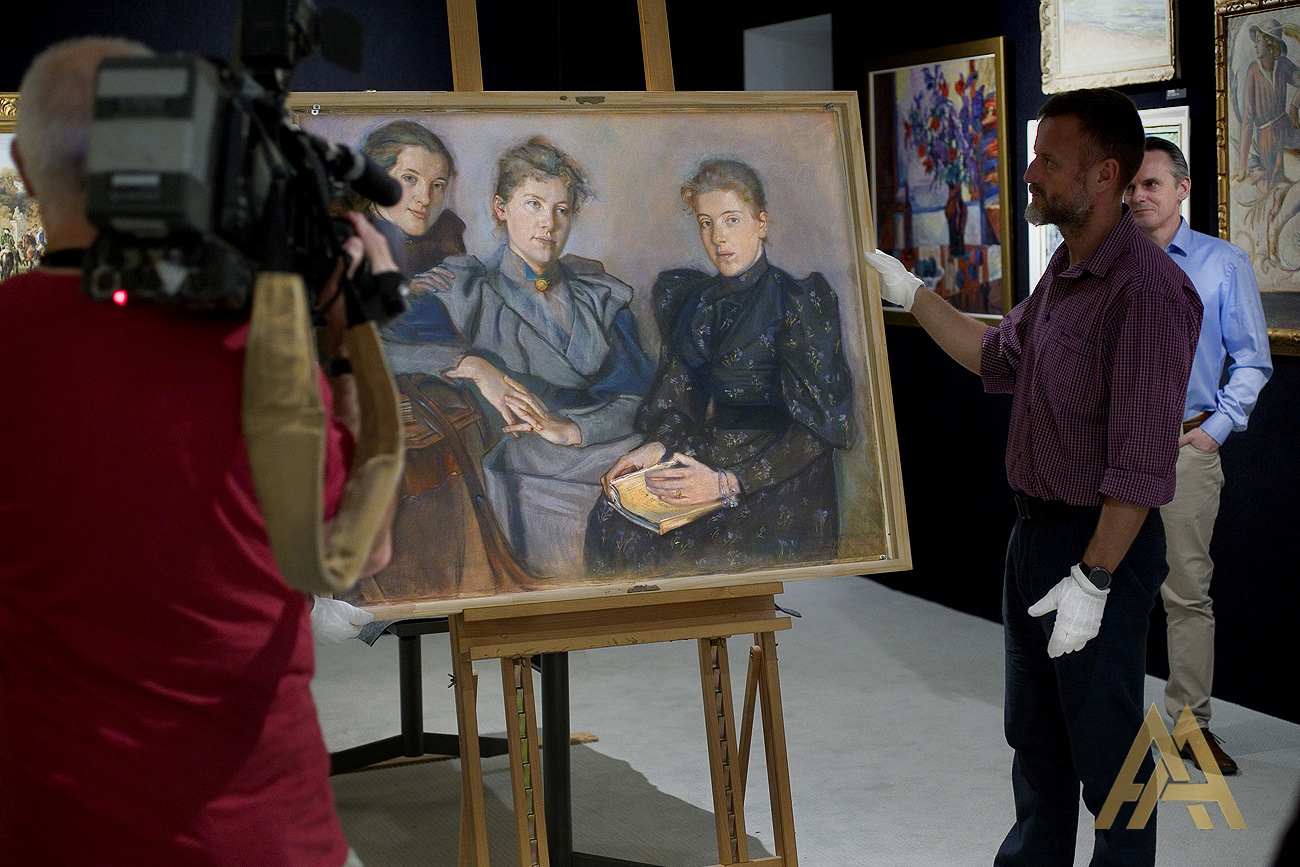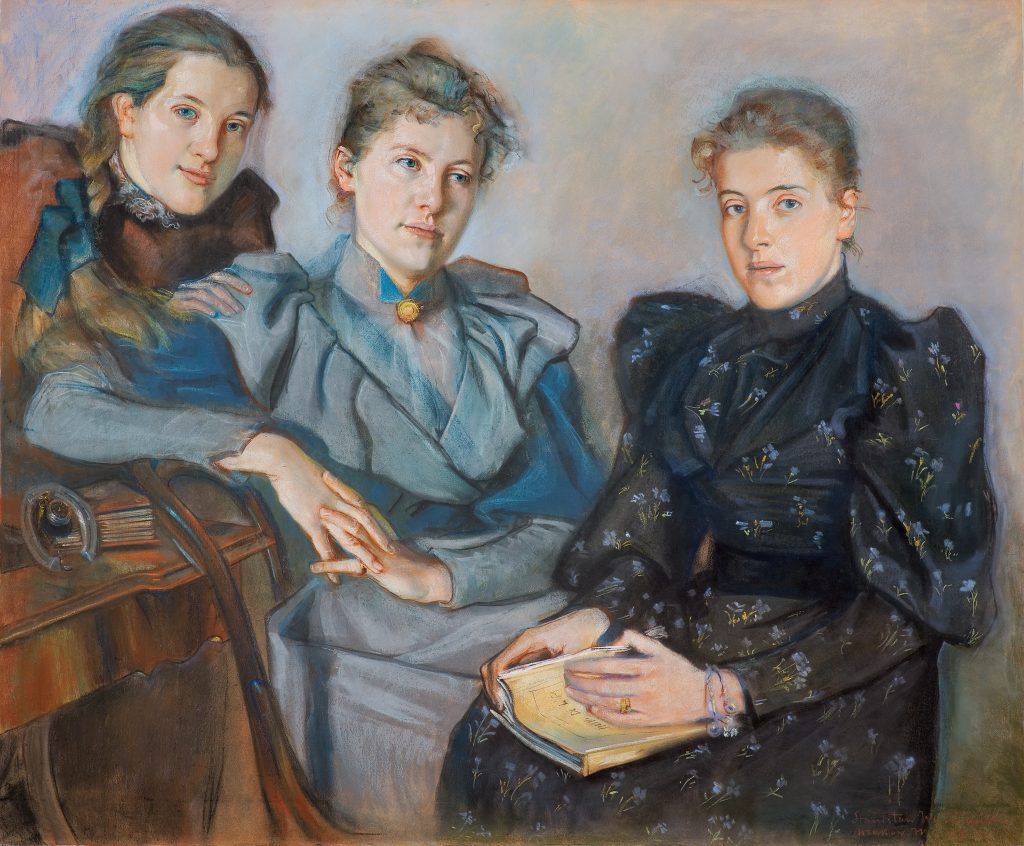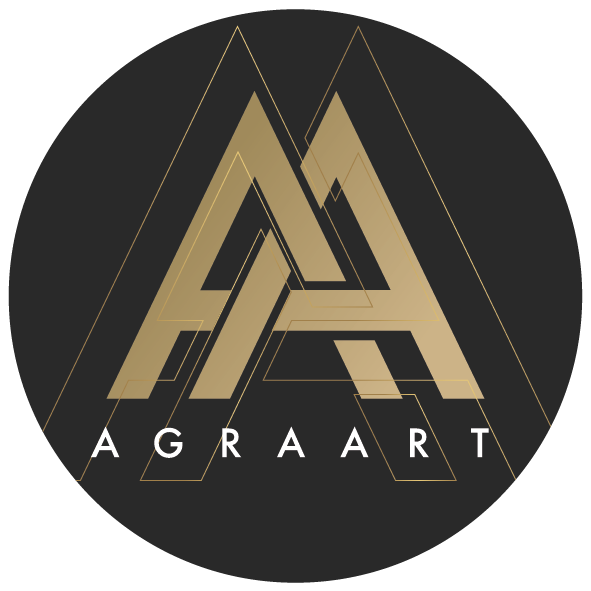Agra Art Auction House had a pleasure of mediating in the sale and import of a Stanisław Wyspiański’s masterpiece – Portrait of the Three Bobrówna Young Ladies.
In the 1930s the portrait had been remaining in the art collection of Hilary Stykolt, who after the World War II settled down in Canada. Throughout the last years Agra Art has been collaborating with collector’s heirs on putting up his valuable paintings for auctions, amongst which a few were of Stanisław Wyspiański.
This pastel painting, referred to in Wyspiański’s first monography of 1925, was kept outside Poland since the end of World War II.
Portrait of the Three Sisters has been purchased by private art collector and – according to the will of Mr. Stykolt’s descendants – has returned to Poland. The import of such a fragile and precious work from across the Atlantic wouldn not have been possible, if it had not been for the great commitment of the Legal Office Kijewski & Graś sp.k.
Currently the painting is being shown at the exhibition “Wyspiański. Afterword” in the National Museum in Cracow.
Portrait of the Three Bobrówna Young Ladies, march 1894
other titles: Portrait of the Three Ladies, The Sisters
crayon, paper, 93,5 x 112,5 cm
sign. r. d.: Stanisław Wyspiański| Kraków marzec 1894 r.
Documentation attached to the painting includes a written export permission issued on 2th August 1947 by the General Managment of Museums and Monuments Prevention and a separate note signed by the General Conservationist with stamps of the Ministry of Arts and Culture on it.
Provenance: One of the first portait’s owners was Włodzimierz Żuławski (d. 1934) from Cracow, who – as an ardent lover of Stanisław Wyspiański’s painting – had collected the most prominent set of his works. Two years after his death all the paintings were displayed in Warsaw at the exhibition showing the unknown master’s works. The portrait was bought there by dr Hilary Stykolt, renowned chemist and lawyer from Łódź. With the help of his wife Henrietta Ring he managed to gather – apart from the aforementioned portrait – a lot of different Wyspiański’s artworks. In September 1939, when the war broke out, family was forced to abandon Poland and decided to entrust the whole collection to their friend’s safekeeping. Fortunately, the paintings survived the turmoil and in 1947 were sent to Canada, where Mr. and Mrs. Stykolt had emigrated and taken root. There, in the following years, the masterpieces have been staying safe in the caring hands of the family.
Stanisław Wyspiański had two crucial skills which made him an ingenious portrait painter: an exceptional ease of drawing and an unbelievably sensitive insight into day-to-day reality. He took pleasure in depicting everyone he was getting along: family members, friends, acquaintances and also… himself. He used to choose his models carefully, declining to portray people he found flat and unattractive. Wyspiański’s meticulousness at work is confirmed by historical records. For example, once he said that he had “no reason to paint the portrait of the client”, but another time – when he got really fascinated with a model – he was spending hours on “looking straight at him [or her] with his piercing eyes and getting through his [or her] soul”. Afterwards he started to “paint remarkably fast”.
The portrait of – little known- Ladies Bobrówna had been painted in Cracow between January and March 1894, just before Wyspiański went to Paris. The painter devoted this two-month stay to portraying his relatives and freinds. In February several of the newly – made portraits were presented in the Sukiennice Gallery. The exhibition was widely commented on by visitors, who noticed that in the images “were true resemblance and character of the person depicted, but not too much of his [or her] self-love”. In this way, the public praised Wyspiański for his realistic manner.
Ladies Bobrówna must have been posing for a portrait in the first half of March 1894. We know this from the annotation by the signature and the exact date of Wyspiański’s departure to Paris (17th March 1894). The painting process – taken into consideration the size of work and its perfect finish – didn’t last long. The young women are portrayed en trois quarts on a neutral background, probably somewhere in the middle-class interiors. On the left side of the composition the artist painted wooden furniture – a chair and table, on which are lying: a book, watch and horseshoe belived to bring luck. The expressions of their faces are quite distinct. They range from the sheer curiosity to deep pondering and solemnity. Undoubtedly, the most eye-catching element of ladies’ looks are beautifully drawn palms, especially those of the central figure. Her gesture of softly entwined hands was being eagerly repeated by Wyspiański in later works, for example in the composition “Caritas” (1896) and “The Girl Leaning Against the Chair” (1899). Because the portrait has been known only from black-and-white reproductions, its full perception has been considerably disrupted. Now, the viewers can admire – invisible on the photographs – subtle colours and sophisticated contrasts between light and shade shaping the draperies and faces.
The Three Bobrówna Young Ladies plays an important role in Wyspiański’s oeuvre. It is probably one out of two multiple-figure compositions in his entire creative output. The majority of portraits painted in the end of 19th century is dual or two-figure – like for example “Two Girls” (1894), “Caritas” (1896) and the later “Maternities”. The group of figures – apart from The Sisters – occurs solely in “Maternity” dating back 1905. Since the war time the portrayal of Bobrówna Ladies has been out of scholars’ reach and remained unknown for many Wyspiański’s admirers, who had no clue of its location. Some of them even thought it could have been lost for ever. Today – thanks to the Agra Art Auction House – we can witness its spectacular “comeback”.
In the end, a couple of words should be said about “The Exhibition of the Unknown Works of Stanisław Wyspiański”, where Hilary Stykolt bought the portrait. It took place in the Philips Salon (9 Mazowiecka Street) in June 1936. The 60 displayed objects (paintings, drawings, 4 reliefs, 48 pages from “The Herbarium” and manuscripts) came from two collections located in Cracow: one owned by Włodzimierz Żuławski and the other by Wyspiański’s daughter Helen and her husband Adam Chmurski. However, neither the exhibition, nor the accompanying sale didn’t strike a chord with the Warsaw public. As a consequence, the works were purchased mainly by the polish national museums and just small number of them became private. Such an overwhelming lack of viewers’ interest – or even their disapproval – was inconceivable for the art critics and journalists of those times. Their reviews seem to be full of bitterness and bafflement.
To learn more about the portrait see the literature on the subject (below) and visit the website of National Museum in Cracow.
To learn more about the portrait see the literature on the subject (below) and visit the website of National Museum in Cracow.
Articles on “The Exhibition of the Unknown Works of Stanisław Wyspiański”, Warsaw 1936:
– Z. Norblin-Chrzanowska, Artystyczne skandale Warszawy, „Świat“, 20 czerwca 1936, s. 1, 4-6, 4 il.;
– W. Husarski, Nieznane dzieła Wyspiańskiego, „Czas“, 13 czerwca 1936, nr 161, s. 6;
– M. Wallis, Nieznane dzieła malarskie Wyspiańskiego, „Wiadomości literackie“, 28 czerwca 1936, nr 28 (660), s. 5.
Selected bibliography:
– S. Przybyszewski, T. Żuk-Skarszewski, S. Świerz, Stanisław Wyspiański. Dzieła malarskie, Inst. Wyd. „Biblioteka Polska“ Kraków, Warszawa, Bydgoszcz 1925, il. na s. 30, s. 109, nr kat. 109;
– [catalogue] Stanisław Wyspiański, Towarzystwo Przyjaciół Sztuk Pięknych w Krakowie, listopad-grudzień 1932, s. nlb., nr kat. 35. [Portret panien Bobrówien];
– [catalogue] Wystawa nieznanych dzieł Stanisława Wyspiańskiego, [Drukarnia Związkowa w Krakowie] Warszawa Mazowiecka 9, czerwiec 1936. s. nlb., nr kat. 10 [ Siostry, pastel, 95 x 116, podpisany 1894 r.];
– Z wystawy nieznanych dzieł Stanisława Wyspiańskiego, „Tygodnik Ilustrowany”, 5 lipca 1936, nr 27, s. 513, il. [Siostry];
– H. Blum, Stanisław Wyspiański, Warszawa 1969, s. nlb. 46, nr kat. 31, tabl. 31;




